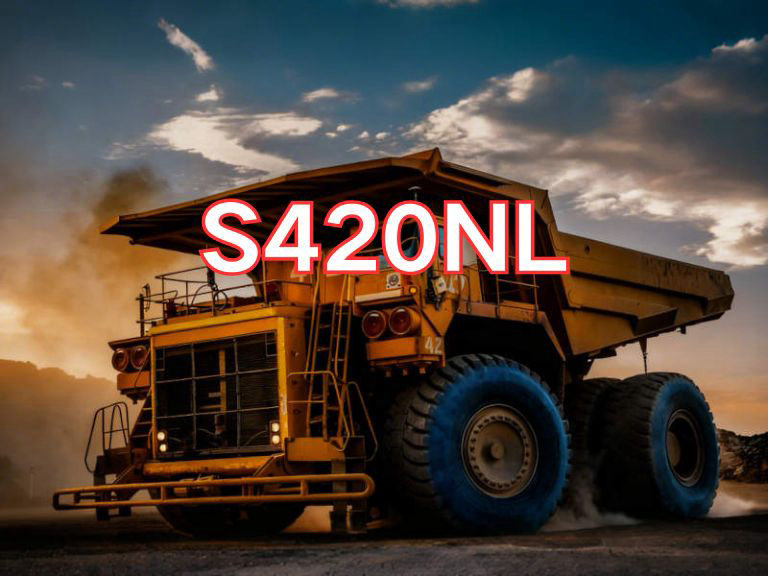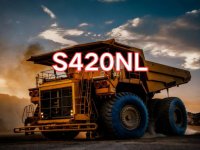

S420NL
S420NL is a high-strength fine-grain structural steel, designated according to the European standard EN 10025-3, and widely used in engineering fields requiring high strength, toughness, and weldability. The "S" stands for Structural steel, "420" indicates the specified minimum yield strength of 420 MPa for thicknesses up to 16 mm, "N" means the steel is delivered in normalized or normalizing-rolled condition, and "L" signifies good low-temperature impact toughness—typically verified by Charpy V-notch testing at -50°C. Together, "NL" denotes a fine-grain steel with excellent low-temperature performance achieved through normalizing treatment.
S420NL steel plate is primarily used in the fabrication of critical structural components operating under harsh or low-temperature conditions. Typical applications include bridges, high-rise buildings, offshore platforms, wind turbine towers, heavy machinery, construction equipment, pressure vessels, and transportation structures. It is especially suitable for steel structures in cold regions or seasonally low-temperature environments, effectively resisting brittle fracture and ensuring long-term structural safety and reliability.
The key characteristics of this grade lie in its uniform microstructure and refined grain size achieved through normalizing or normalizing-rolled processing. This enables excellent low-temperature toughness and good weldability while maintaining high strength. Normalizing improves structural homogeneity, reduces internal stresses, and enhances fatigue resistance and resistance to lamellar tearing. S420NL can typically be welded without special preheating, simplifying construction procedures and reducing fabrication costs. Additionally, its good ductility and dimensional stability make it suitable for complex forming processes and on-site installation.
Currently, S420NL plates are manufactured and supplied in accordance with EN 10025-3:2019 – “Hot rolled products of structural steels – Part 3: Technical delivery conditions for normalized/normalized rolled fine grain steels”. This standard specifies detailed requirements for chemical composition, mechanical properties, impact energy, dimensional tolerances, and inspection methods, serving as the internationally recognized technical reference. Thanks to its outstanding overall performance, S420NL has become an essential material in modern high-end structural engineering applications.

Ultrasonic Testing (UT)
A key non-destructive testing technique that uses high-frequency sound waves to detect internal flaws in steel plates. The probe emits sound waves, which reflect when encountering defects such as cracks or inclusions. The receiver captures the echoes, enabling precise determination of defect location and size. With high sensitivity, strong penetration, and fast inspection speed, UT effectively ensures internal quality, widely used in the production of heavy plates, pressure vessel plates, and other high-end products to guarantee safety and reliability.

Magnetic Particle Testing (MT)
A common surface inspection method that magnetizes the workpiece, causing leakage magnetic fields at surface or near-surface defects like cracks or inclusions, which attract magnetic particles to form visible indications. Simple to operate and highly sensitive, MT is suitable for rapid inspection of surface and near-surface flaws in ferromagnetic materials, widely used for online or offline inspection of plate edges, ends, and welds, ensuring product quality and safety.

Penetrant Testing (PT)
A non-destructive method for detecting surface-breaking flaws. A penetrant liquid is applied to the cleaned steel surface, allowing it to seep into defects such as cracks or pores. After removing excess penetrant, a developer is applied, causing the trapped penetrant to bleed out and form visible indications. Simple and cost-effective, PT is suitable for inspecting surface defects in various non-porous materials, commonly used for welds, castings, and complex components, effectively ensuring surface quality of steel plates.












